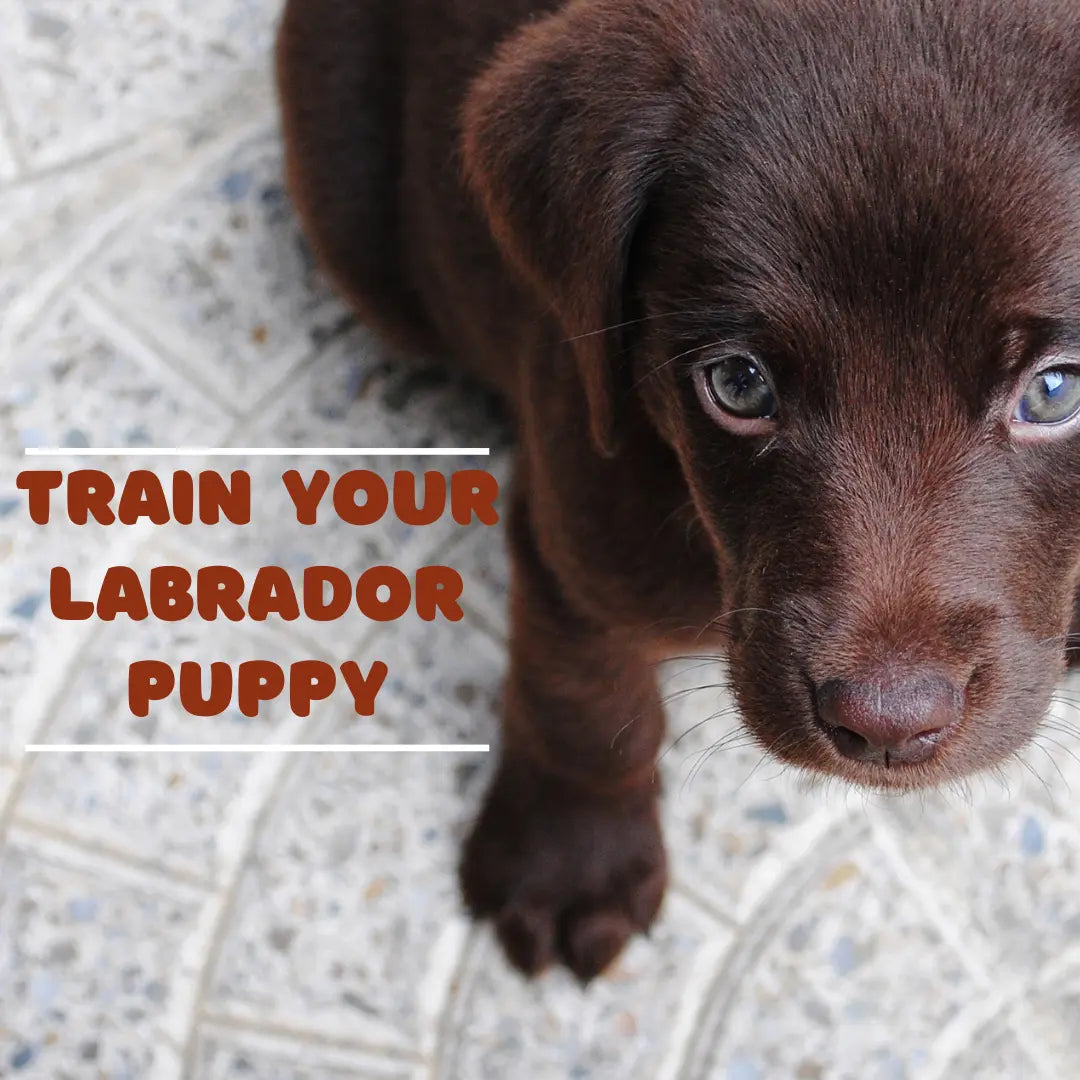
How to Train a Labrador Puppy?
Nivedita FernandesLabrador Puppy Care Guide: Everything You Need to Know
Labrador Retrievers are one of the most popular and lovable dog breeds worldwide. Their affectionate nature, high intelligence, and playful energy make them ideal family pets. However, training a Labrador puppy can seem challenging, especially if it’s your first time raising a dog. Whether you're introducing basic commands or tackling unwanted behavior, this step-by-step guide will help you effectively train your Labrador puppy.
Let’s dive into the essentials of how to train a Labrador puppy and transform your bouncy little pup into a well-behaved companion.
1. Start Early with Basic Obedience Training
Training your Labrador puppy should start as early as 8 weeks old. Puppies are highly impressionable during this period, making it the perfect time to instill good habits. Focus on simple yet effective commands:
-
Sit: Hold a treat close to your pup’s nose, move it upward, and say “Sit.” When your Labrador sits, reward immediately with praise and a treat.
-
Stay: After your pup learns “Sit,” introduce “Stay.” Use a hand signal (like a flat palm facing the dog) and take small steps back.
-
Come: Use a cheerful tone and say “Come” while kneeling down with your arms open. Always reward them for returning to you.
2. Use Positive Reinforcement
Labradors are highly food-motivated and eager to please, which makes positive reinforcement the most effective training method. This involves rewarding good behavior with treats, verbal praise, or playtime. Examples of positive reinforcement include:
-
Treats when they follow commands.
-
Praise with phrases like “Good boy/girl!”
-
Extra playtime or affection after successful training sessions.
Avoid punishment or scolding, as this can lead to fear and distrust. Labradors respond much better to rewards than negativity.
3. Crate Training Your Labrador Puppy
Crate training is essential for housebreaking and ensuring your Labrador has a safe, comfortable space to relax. Follow these steps:
-
Step 1: Make the crate inviting with soft bedding and toys.
-
Step 2: Encourage your puppy to enter the crate with treats or their favorite toy.
-
Step 3: Start with short crate sessions, gradually increasing the time. Always reward calm behavior.
-
Step 4: Never use the crate as punishment; it should always feel like a positive environment.
Crate training also helps prevent destructive chewing or accidents when you’re away.
4. Housebreaking: Teaching Your Labrador Puppy to Potty Outside
House training is one of the most critical parts of Labrador puppy training. Use these tips to potty train effectively:
-
Establish a Schedule: Take your puppy outside after meals, naps, and playtime.
-
Choose a Designated Spot: Always take them to the same spot to encourage consistency.
-
Reward Immediately: Praise and reward your Labrador puppy as soon as they go potty outside.
-
Be Patient: Accidents happen, especially in young puppies. Avoid scolding; simply clean the area thoroughly to remove odors.
Consistency and positive reinforcement are key to housebreaking success.
5. Socialize Your Labrador Puppy
Socialization is crucial to ensure your Labrador grows into a confident and friendly dog. Expose your puppy to various people, places, sounds, and other animals early on. Here’s how you can socialize effectively:
-
Puppy Classes: Enroll your Labrador in puppy training classes to meet other dogs.
-
Playdates: Arrange playdates with well-behaved dogs.
-
Outdoor Exposure: Take short walks in safe areas to expose your puppy to different environments.
Early socialization prevents fearfulness and aggression while promoting a happy temperament.
6. Leash Training for Walks
Teaching your Labrador to walk nicely on a leash is important for enjoyable walks. Here’s how:
-
Start Indoors: Attach a lightweight leash and let your puppy get used to wearing it.
-
Teach “Heel”: Walk with your puppy at your side and reward them for staying close.
-
Redirect Pulling: If your Labrador pulls, stop walking and call them back to your side. Only move forward when the leash is loose.
Consistency will teach your puppy to enjoy calm and controlled walks.
7. Addressing Unwanted Behaviors
Labrador puppies are naturally playful but may develop habits like biting, chewing, or jumping. Here’s how to manage these behaviors:
-
Biting: Offer chew toys and redirect biting to appropriate objects. Use firm commands like “No bite.”
-
Chewing: Provide plenty of chew toys and puppy-proof your home by keeping items out of reach.
-
Jumping: Ignore jumping behavior and reward calm behavior. Teach your puppy to sit for attention instead.
Labrador puppies require patience and redirection to learn appropriate behavior.
8. Mental Stimulation and Exercise
Labradors are active and intelligent dogs that need both physical and mental stimulation to prevent boredom. Engage your Labrador with:
-
Interactive Toys: Puzzle toys and Kong toys keep their minds sharp.
-
Short Training Sessions: 5-10 minutes of daily training helps build focus and obedience.
-
Playtime: Fetch, tug-of-war, and swimming are great ways to tire out energetic puppies.
Proper exercise prevents destructive behavior and keeps your puppy healthy.
9. Train with Patience and Consistency
Training a Labrador puppy takes time and commitment. Focus on short, frequent training sessions (5-10 minutes) to avoid overwhelming your pup. Repetition and consistency will reinforce good behavior over time.
Celebrate small victories and remember that every puppy learns at their own pace.
Final Thoughts: Building a Lifelong Bond
Labrador puppies are eager learners who thrive when trained with love, patience, and positive reinforcement. By starting early, maintaining consistency, and focusing on socialization, you can raise a happy, well-behaved Labrador Retriever.
Training isn’t just about commands; it’s about building trust, strengthening your bond, and ensuring your Labrador becomes a loving companion for years to come.
FAQs
-
When should I start training my Labrador puppy?
Training can begin as early as 8 weeks old with basic commands like sit, stay, and come. -
How long does it take to potty train a Labrador puppy?
With consistency, most Labradors are housebroken within 4-6 months. -
What treats should I use for training?
Use small, healthy treats like pieces of boiled chicken or store-bought training treats. -
How do I stop my Labrador from biting?
Redirect biting to chew toys and firmly say “No bite” to discourage the behavior.
Training a Labrador puppy is a rewarding journey filled with patience and joy. Remember, the effort you invest today will result in a well-mannered and loving dog tomorrow. Happy training!



